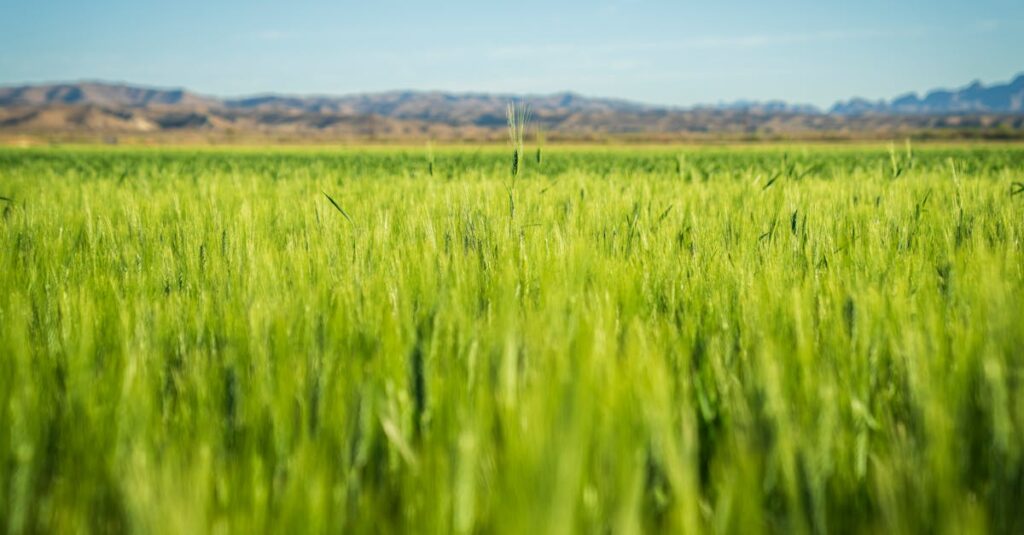Primary productivity is a fundamental process that fuels ecosystems around the globe. It refers to the rate at which energy is converted by photosynthetic and chemosynthetic autotrophs into organic substances. This process not only supports plant growth but also sustains entire food webs, making it crucial for the health of our planet.
What is Primary Productivity? Understanding primary productivity helps to grasp how energy flows through ecosystems and the vital role it plays in maintaining biodiversity. Factors like sunlight, nutrients, and water availability directly influence productivity levels, shaping habitats and influencing climate. By exploring primary productivity, one can appreciate the intricate balance of life on Earth and the importance of preserving our natural environments.
What is Primary Productivity?
Primary productivity serves as the foundation for energy transfer in ecosystems. It plays a crucial role in converting inorganic substances into organic matter, supporting various life forms.
Definition of Primary Productivity
Primary productivity refers to the rate at which energy is converted by photosynthetic and chemosynthetic organisms into organic materials. This process occurs mainly in plants, algae, and some bacteria, as they capture solar energy or chemical energy to synthesize organic compounds. The measurement of primary productivity often includes gross primary productivity (GPP), representing the total energy captured, and net primary productivity (NPP), which accounts for energy used in respiration.
Importance in Ecosystems
Primary productivity is vital for the health of ecosystems for several reasons:
- Energy Source: It provides primary producers with the essential energy that fuels all food chains and webs.
- Biodiversity Support: Higher productivity typically leads to greater diversity in plant and animal species within an ecosystem.
- Carbon Sequestration: It helps reduce carbon dioxide levels in the atmosphere by absorbing carbon during photosynthesis, contributing to climate regulation.
- Nutrient Cycling: By generating organic matter, primary productivity facilitates nutrient cycling, promoting soil health and ecosystem stability.
Understanding these dynamics highlights the interconnectedness of life and the importance of preserving environments that nurture primary productivity.
Types of Primary Productivity
Primary productivity comprises two main types: gross primary productivity (GPP) and net primary productivity (NPP). Each type plays a distinct role in ecosystem functioning and energy transfer.
Gross Primary Productivity
Gross primary productivity (GPP) represents the total amount of energy captured by photosynthetic organisms during a specific period. It quantifies the energy produced before any losses due to respiration occur. GPP is essential for assessing the overall energy input into an ecosystem. Factors influencing GPP include light intensity, temperature, and nutrient availability. For instance, a forest ecosystem may exhibit a higher GPP compared to a desert due to increased sunlight and water availability.
Net Primary Productivity
Net primary productivity (NPP) measures the energy remaining after accounting for the energy used in respiration by primary producers. NPP reflects the actual organic material available for consumers in an ecosystem. It indicates the efficiency of production since only the surplus energy contributes to growth and reproduction. NPP is critical for food web dynamics, as it determines how much energy is accessible to herbivores and, subsequently, to higher trophic levels. For example, in aquatic systems, NPP can vary significantly based on nutrient levels, influencing fish populations and overall biodiversity.
Factors Affecting Primary Productivity
Several factors influence primary productivity, impacting the rate at which energy converts into organic materials in ecosystems.
Light Availability
Light availability significantly affects primary productivity. Photosynthetic organisms require sunlight to convert carbon dioxide and water into energy-rich compounds. The intensity and duration of light exposure directly influence gross primary productivity (GPP). In aquatic environments, light penetration diminishes with depth, resulting in lower productivity levels. Regions with higher sunlight exposure, such as tropical areas, generally exhibit higher productivity rates than shaded or less-lighted regions.
Nutrient Levels
Nutrient levels play a crucial role in determining primary productivity. Essential nutrients, including nitrogen, phosphorus, and potassium, are vital for plant growth and metabolic processes. Areas rich in nutrients often support higher net primary productivity (NPP). Conversely, nutrient-poor environments, such as deserts or open oceans, demonstrate lower productivity. Fertilization or natural nutrient upwelling events can enhance productivity in certain ecosystems.
Temperature and Climate
Temperature and climate conditions significantly impact primary productivity. Most plants thrive in moderate temperatures, around 15°C to 25°C (59°F to 77°F), where metabolic processes function optimally. Extreme temperatures, whether too cold or too hot, can inhibit growth and reduce energy conversion efficiency. Additionally, climate factors such as rainfall patterns affect water availability, further influencing productivity levels. Regions with consistent, optimal climate conditions typically support more robust ecosystems characterized by higher primary productivity.
Measuring Primary Productivity
Measuring primary productivity involves a variety of methods and tools that quantify the rate at which energy is converted into organic substances. Accurate assessments allow scientists to understand ecosystem health and dynamics effectively.
Methods and Tools
- Chlorophyll Measurement
Chlorophyll content, often measured using spectrophotometry, indicates photosynthetic capacity. Higher chlorophyll concentrations typically correlate with increased primary productivity. - Satellite Remote Sensing
Satellites equipped with sensors capture data on surface reflectance and chlorophyll levels. This method offers a large-scale overview of productivity across diverse ecosystems. - Oxygen Production Measurement
The oxygen evolution method evaluates the amount of oxygen produced by aquatic plants during photosynthesis. Increased oxygen levels reflect higher rates of primary productivity. - Carbon Dioxide Fixation
Scientists measure the amount of carbon dioxide uptake in controlled environments to determine productivity rates. This method assesses the efficiency of photosynthetic processes. - Bell Jar Experiment
The bell jar technique provides insights into net primary productivity by quantifying oxygen change in a sealed environment. Measurements taken over time indicate the balance between production and respiration. - In Situ Measurements
Conducting field studies involves direct sampling of biomass and measuring growth rates. This hands-on approach ensures localized understanding of productivity dynamics.
- Environmental Variability
Fluctuations in light, temperature, and nutrient availability can lead to inconsistent productivity measurements. Differences in seasonal cycles impact results significantly. - Scale Issues
Discrepancies between small-scale laboratory measurements and large-scale ecosystem performance complicate comparisons. Scaling up experimental results poses challenges in accuracy. - Complex Ecosystems
Diverse species interactions and varying growth forms hinder straightforward quantification. Interdependence among organisms adds layers of complexity to productivity assessments. - Data Interpretation
Interpreting data from various methods requires expertise to understand underlying ecological factors. Misinterpretations can lead to incorrect conclusions regarding ecosystem health. - Technological Limitations
Availability of advanced monitoring tools may restrict certain regions, affecting overall productivity assessments. Resource limitations impact the breadth of research capabilities. - Temporal Dynamics
Productivity varies over time, necessitating long-term studies for reliable assessments. Short-term measurements may overlook critical seasonal changes essential for understanding overall trends.
Life on Earth
What is Primary Productivity? Understanding primary productivity is essential for appreciating the intricate web of life on Earth. It plays a pivotal role in sustaining ecosystems by converting energy into organic matter that supports diverse food webs. The balance of factors influencing productivity, such as sunlight, nutrients, and climate, highlights the delicate nature of these systems.
As the planet faces environmental changes, recognizing the importance of primary productivity becomes crucial for conservation efforts. By focusing on preserving the conditions that foster high productivity, society can ensure the health of ecosystems and the resources they provide. This knowledge empowers individuals and communities to make informed decisions that support a sustainable future for all living organisms.

